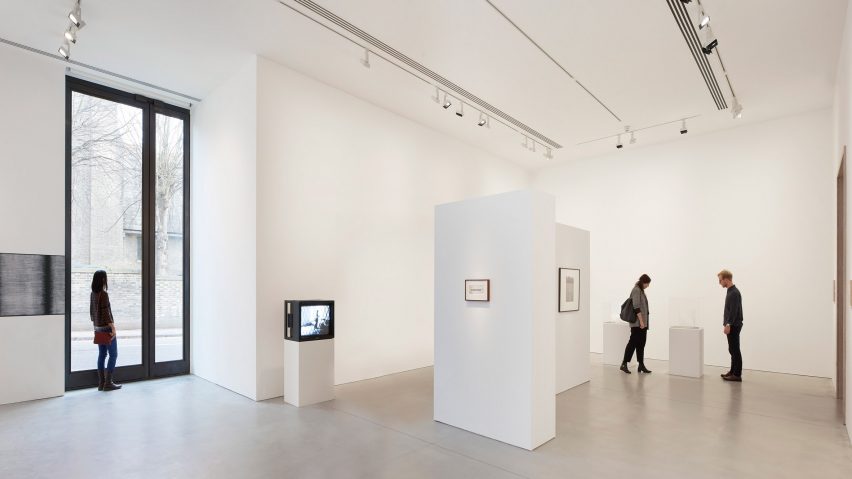Jamie Fobert Architects has completed an extension to Kettle's Yard gallery in Cambridge, England, adding a series of new exhibition and education spaces that complement the intimate and relaxed rooms of the original converted house.
Kettle's Yard is the University of Cambridge's modern and contemporary art gallery. It occupies the former home of collector and supporter of avant-garde art, Jim Ede, who was a curator at the Tate gallery in the 1920s and 30s.
The original house acquired by Ede in 1956 comprises a cluster of reclaimed artisanal cottages, to which an extension designed by Leslie Martin and David Owers was added in the 1970s.
Fobert's project seeks to retain the consistency of the gallery's spaces, while improving accessibility and introducing a new entrance and welcome area, galleries, education spaces and a cafe.
"The entire spatial sequence feels intended – from the original house, through the outstanding 1970s extension and into the new wing," said the studio, which was also behind the recent extension of the Tate St Ives gallery in Cornwall.
"Continuity has been achieved by sensitivity to the domestic scale and calm aesthetic of the house, and by repetition of the brickwork and simple volumes of rough plaster of the existing galleries," added the architects.
A small lane at the side of a Victorian terraced building facing onto Castle Street leads to a courtyard containing a new glazed entrance lined with substantial blackened-bronze frames.
The new foyer unites the various elements of the building and enables movement between the original house, old and new galleries, the new education spaces, shop and cafe, and an archive and project space.
Steps and a ramp provide access to an education wing containing a pair of spacious new galleries that enable the institution to display larger artworks than was possible in the existing exhibition areas.
The education wing accommodates a double-height learning studio in the basement level. Large windows at street level overlook this space, creating a direct connection between the facility and the community.
A new archive is accommodated on the publicly accessible upper floor, along with an archival exhibition space and a project room that looks onto the street. In total, the space available for learning activities is increased by nearly 200 per cent.
The new additions seek to replicate the comfortable scale and spatial quality of the converted house and its existing extensions.
Materials such as brick and wood echo the palette of the original building, while scaled-up versions of the skylights employed by Martin and Owers in the earlier extension allow natural light to pour into the spaces.
Following the two-year renovation project, the gallery will reopen on 10 February 2018 with a multimedia exhibition titled "Actions. The image of the world can be different".
In addition to regular commissions for galleries and museums, Jamie Fobert Architects has completed residential projects including a London townhouse that combines handmade bricks with bronze panelling.
Photography is by Hufton + Crow.

